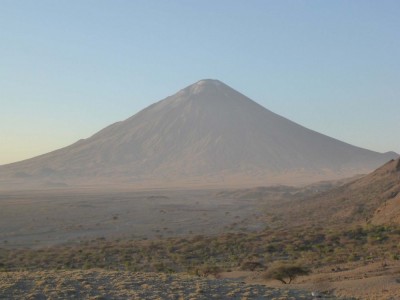New Fieldwork completed in the East African Rift

Geoffrey King led new fieldwork to examine soil edaphics and tectonics in the Kenyan and Tanzanian Rift between 13th and 30th September.
Other participants were Matthew Bennett, Felix Furgut, Simon Kübler, Sally Reynolds and Stephen Rucina
The fieldwork had two objectives. The first was to examine features in our 2013–14 study of the Olorgesailie region of south Kenya (Kübler et al., 2015) and to introduce Felix Furgut to a possible fieldwork project for a Masters degree supervised by Simon Kübler in Munich. It is clear that processes of caldera collapse identified earlier are a continuing process and can be studied by looking at river terraces and erosion. We now have high resolution Digital Elevation Data supplied to us by the German Space Agency which will greatly aid this project and will also allow further studies of the region. Further field work will be carried out in February or March 2015.
A second objective was to examine the region from Olduvai Gorge to the Kenya border with a view to establishing a future project to extend our Kenya work to the south. It is clear that we can reconstruct the landscape in a similar way to Olorgesailie and our understanding of the relationship between rock types and the soils suggests that soil sampling and analysis will provide major insights.
We have also contacted Martyn Murray who has proposed (Murray 1995) that the famous wildebeest migration in the Serengeti is driven mainly by the need for soluble phosphate. In the dry season animals move to the north where there are reliable rivers but they become deficient in phosphate. In the wet season they move to the south (near to Olduvai Gorge) where the grazing is rich in phosphate and they have their calves over a period of 2 weeks (phosphate is needed to grow bones).
A study of soil edaphics in the Serengeti and Olduvai region together with landscape reconstruction using the techniques we have developed in Kenya should shed light on interesting problems. Dr Stephen Rucina is very keen on the project and has identified Tanzanian colleagues who would be delighted to collaborate. He has also found a young soil scientist who can start to fill the void left by Peter Owenga’s death.
The photograph shows the Ol Doinyo Lengai volcano in the Gregory Rift of Tanzania, located between Olduvai Gorge and the Kenyan border. The volcano is unique in producing lavas rich in sodium and potassium carbonates that contribute significantly to the edaphic properties of the surrounding soils.
Murray, M.G. 1995. Specific nutrient requirements and the migration of the wildebeest. In A.R.E Sinclair and P. Arcese (eds) Serengeti II - Dynamics, Management and Conservation of an Ecosystem. Chicago: University of Chicago Press, pp. 231–256.






